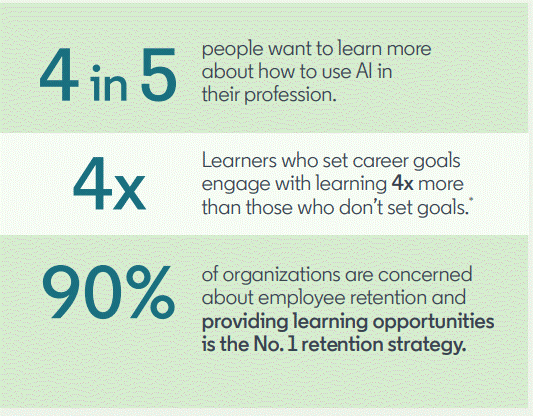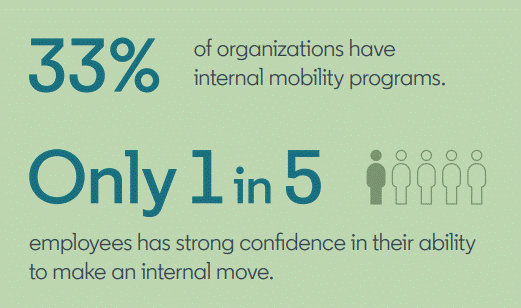LinkedIn released its 2024 Workplace Learning Report, revealing an increase in interest in AI skills. Additionally, LinkedIn Learning is providing new tools for internal mobility and career development.
In conjunction with its yearly 2024 Workplace Learning Report, which focuses on the state of learning and development and the skills required for the future, LinkedIn is providing 250 free AI courses through April 5th to aid in the development of AI literacy in the workplace.
More for you: Here are 8 AI tools to boost your LinkedIn content
It’s clear that workers want to acquire essential AI skills; according to the LinkedIn Learning report (Figure A), four out of five respondents say they’d like to learn more about applying AI in the workplace. According to Jill Raines, director of product management at LinkedIn, in an email interview with TechRepublic, the high number was one of the report’s unexpected findings.

How to access free AI courses through LinkedIn Learning
The 250 complimentary AI courses can be found in LinkedIn’s Learning Hub, but regardless of learning subscription status, everyone can access them for free until April 5th. English, Brazilian Portuguese, French, German, Japanese, Mandarin, and Spanish are among the seven languages covered in these AI courses.
“Even though we’re not changing jobs, jobs are changing on us,” Raines clarified when asked why these free AI courses were being provided. According to our data, the average job’s skill set will change by 51% globally by 2030 compared to 2016, and the development of generative AI will hasten this change to 68%. In order to help people acquire the skills they need to keep up with this change and prosper in the AI era, talent leaders have a significant role to play.
According to Raines, the objective was to ensure that the free AI courses offered by LinkedIn catered to different skill levels. “Therefore, there is content for you whether your goals are to upskill engineers to maintain and train AI models, empower your teams to make GAI-powered business investments, or develop general fluency in generative AI.”
Not surprisingly, she said, the company has seen a 5X increase in learners engaging with AI content year over year, and courses on generative AI “skyrocket in popularity.” This year, some of the most well-liked AI courses on LinkedIn include:
- What is Generative AI?
- Introduction to Prompt Engineering for Generative AI
- Ethics in the Age of Generative AI
Companies with strong learning cultures see higher rates of retention
According to Raines, employers need to realize that offering opportunities for skill and career development is more than just a “perk”; rather, it’s a necessity for business, a potent retention tactic, and the key to ensuring that workers acquire the appropriate skills for the appropriate roles at the appropriate times. She went on to say that employers must use L&D professionals and foster a culture of learning.
However, according to recent LinkedIn surveys of American executives, only 38% of businesses say they are currently assisting staff members in becoming AI-literate. Given that 85% of respondents plan to change jobs this year, 90% of organizations are also concerned about employee retention and are offering learning opportunities.
“We can now genuinely link favorable business results to possessing a robust learning culture — an effective instrument for (learning and development) experts and executives presenting a business argument for education,” the speaker stated.
Raines cited the results of a LinkedIn study showing that organizations with robust learning cultures observe:
- Greater retention rates (+57%).
- Increased internal movement by 23%.
- A better management pipeline (+7%) in comparison to those with lower commitment levels.
Furthermore, Raines stated, “It’s critical for employees to invest in their own skill building and to be vocal about their own career development as skills needed for jobs change.”
More for you: The Latest AI Framework in LinkedIn’s Content Moderation Unveiled
Only one-third of organizations offer internal mobility programs
One noteworthy discovery from LinkedIn’s report is that, according to Figure B, only 33% of companies provide internal programs to help employees grow in their careers. This could be the case because, according to Raines, “it’s challenging to get right for many organizations,” despite the obvious advantages of developing cultures that support internal mobility. “To be exact, just one out of every five workers strongly believes they can make an internal promotion.”

She continued, “There are a number of reasons why.” Hiring managers report that the following three things are the biggest obstacles to internal mobility, per recent LinkedIn research:
- Talent hoarding (40%)
- Lack of opportunities for learning and growth to give people the skills necessary to change careers (39%)
- 35 percent of the organization lacks an efficient internal mobility management process.
The truth is that a change in perspective is required. From executives to managers to employees themselves, everyone has a responsibility to foster an environment that supports internal moves.




